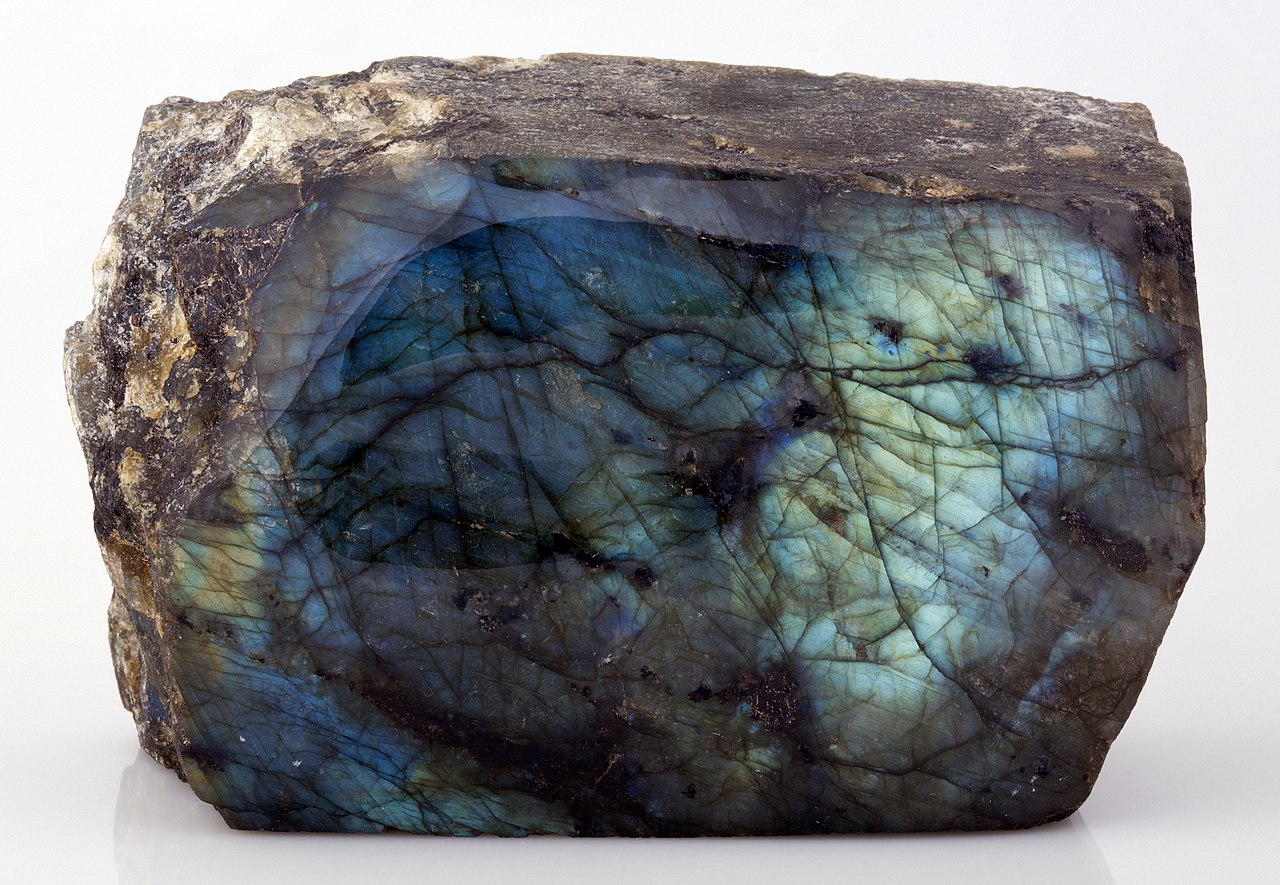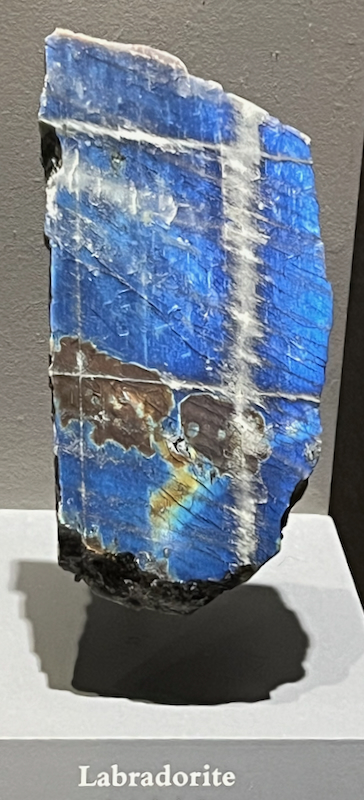Labradorite
Ah, the “ite” minerals! Where was labradorite first found? Yes—Labrador! And that’s in the far northeastern part of Canada. Whoever first found it must have been pretty psyched, because it’s definitely one of the coolest looking minerals. It’s so special, scientists even gave a name to the way it looks: labradorescence. Labradorite has this unique look like you can see into it but not through it, and as you look into it and move it around, you can see shimmering layers of blue, green, silver, and other colors that seem to move inside it. There’s also a rare kind of labradorite called “spectrolite” that’s even more special, as it’s only found in Finland and shows even more different colors than standard labradorite. Some other minerals—opal, adularia—can have effects similar to labradorite’s, but the effect in labradorite is unique. Although labradorite is special, it is a variety of a very common mineral—actually the most common mineral in the world—feldspar. Labradorite polishes nicely, so it’s popular for using in jewelry or just for having a big polished chunk of it sitting on your desk.
| Formula | Group or Type | Shape | Hardness | Specific Gravity | Streak | Luster |
|---|---|---|---|---|---|---|
| (Ca,Na)[Al(Al,Si)Si2O8] | Feldspar | Triclinic | 6–6.5 | 2.68–2.72 | White | Vitreous to greasy |

